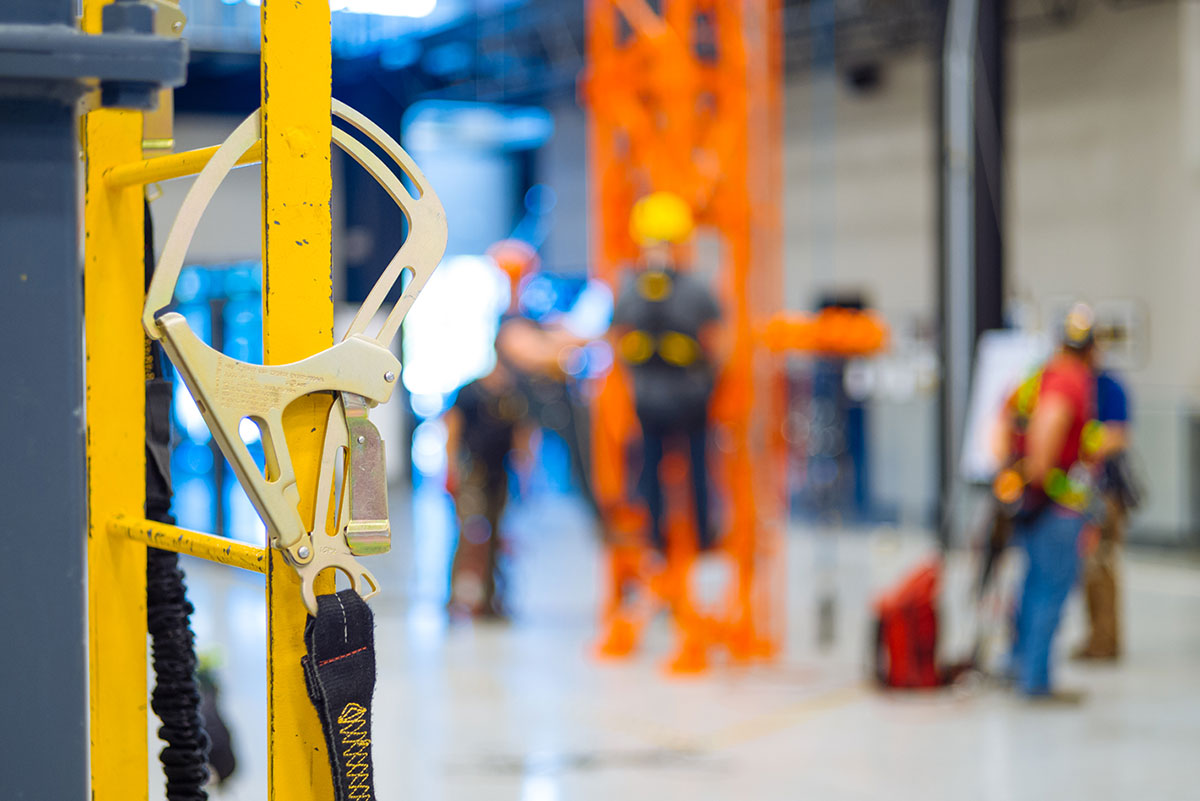Your cart is currently empty!
OSHA Clarifies Fall Protection Questions!

OSHA Clarifies Fall Protection Questions!
OSHA has recently put out a letter of interpretation regarding a couple common questions about the new Walking Working Surfaces and Fall Protection Systems regulation.
The first has to do with proof loading of snap hooks. Gravitec has long been a supporter of connectors with stronger gates. We believe OSHA requiring connectors with a 3600 pound rated gate will do more to prevent equipment related accidents than any other single requirement. It’s a good thing! (if you haven’t yet, get on board and replace all your old connectors). The language used in the regulation stated that all connector gates were required to be proof loaded to 3600 pounds, which seemed odd to a lot of the technical folks. ANSI requires the gates of all connectors be rated to 3600 pounds and batch test the design accordingly, but it does not require each and every connector gate to be proof loaded. This would damage the gate and render the hook useless. Everyone figured that this was an oversight and OSHA mistakenly used this wording, and the OSHA issued letter confirms this. OSHA does not need every connector gate proof loaded to 3600 pounds.
The other clarification is regarding 1910.30 that requires a “qualified person” to conduct an employers’ fall protection training. Fear ran through all fall protection engineers thinking they are going to be relegated to conducting training. Employers wondered how any drawings were going to get stamped because their engineers would be teaching the crew how to put on a harness. This language created confusion because other regulations use the term “competent person” to describe who shall conduct training. There is a general misconception that a “qualified person” is a professional engineer. This is incorrect….usually, sometimes, maybe… I’ll do my best to explain. Before you can determine who is qualified or competent, you have to look at the subject matter. We know that a qualified person is a subject matter expert, by demonstration of their education (degree/certificate), experience or professional standing they have proven an ability to resolve problems relating to the subject matter. When the subject matter is fall protection training, an expert is likely a person with an ability to teach, knowledge of the subject, education or training in fall protection and a proven ability to solve problems relating to training. If there are gaps in a students knowledge or skill, a qualified person (trainer/instructor) has to have the ability to resolve the problem. It is a much different person when the subject matter is determining the existing loads on the column of a building with six-inches of snow load to make sure the building won’t fall down when a horizontal lifeline is anchored to it. In this situation, the subject matter is structural engineering, therefore the qualified person is likely a professional structural engineer. So the OSHA letter explains, in a really wild, cross-referencing fashion, that a competent person who is identified as a trainer, fits the definition of a “qualified person” in regard to fall protection training.
If you have any questions, contact Gravitec Systems at 1.800.755.8455